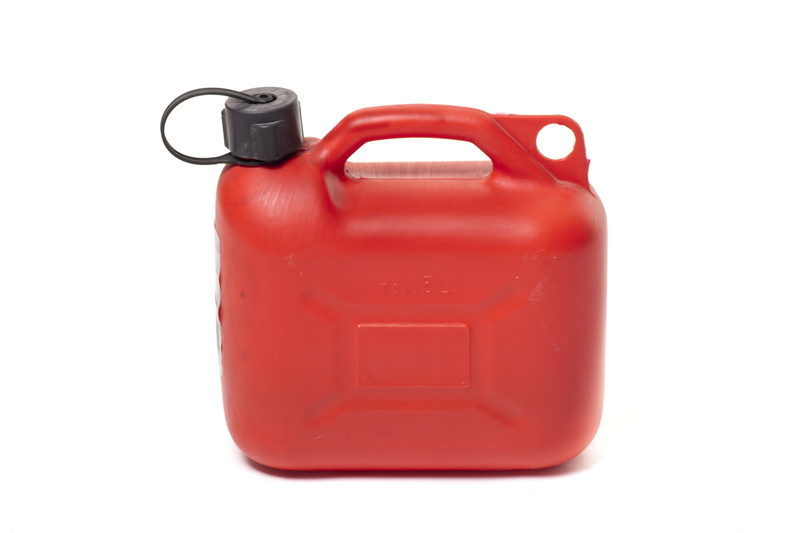How to Ensure Safe Storage for an Unused Freezer
Posted on 18/05/2025
How to Ensure Safe Storage for an Unused Freezer
Properly storing an unused freezer is crucial for both safety and appliance longevity. Whether you are downsizing, moving, renovating, or simply not needing your freezer for a while, improper storage can lead to significant risks such as mold, odor, physical damage, and even hazards for pets or children.
In this comprehensive guide, we dive into how to ensure safe storage for an unused freezer. Learn step-by-step preparation, storage safety tips, placement suggestions, and long-term maintenance for peace of mind and appliance preservation.
Why Safe Storage for an Unused Freezer Is Important
Freezers that are stored incorrectly can pose several dangers. Physical hazards, energy waste, property damage, and even health risks from pests or mold are all concerns. Moreover, a neglected appliance can lose its efficiency or may require costly repairs when you need to use it again.
Common Risks Associated with Improper Freezer Storage:
- Mold Growth: Moisture left inside the freezer can cause mold and unpleasant odors.
- Physical Injuries: Children or animals could get trapped inside if the appliance is not properly secured.
- Rust and Corrosion: Dampness and poor ventilation may accelerate deterioration.
- Vermin Intrusion: Unsealed or poorly stored freezers can attract pests and rodents.
- Electrical Damage: Storage in improper conditions (such as outdoors) can harm electrical components.
- Environmental Concerns: Leaking refrigerants from a damaged or old freezer harm the environment.

Essential Steps for Preparing a Freezer for Storage
Preparing your freezer for safe and effective storage is a critical first step. Here's how to ensure every detail is addressed before putting your appliance away.
Step 1: Defrost and Clean the Freezer Properly
- Unplug the Appliance: Always disconnect the freezer from electricity before cleaning or moving.
- Remove All Contents: Take out all food items, drawers, and removable shelves.
- Defrost Completely: Allow all ice to melt. Speed up the process with towels or bowls of hot water, but never use sharp objects to remove ice.
- Deep Clean the Interior: Wash the inside thoroughly with a mixture of warm water and baking soda to neutralize odors and remove residue.
- Dry Fully: Ensure every surface is completely dry with clean towels to prevent moisture buildup and mold formation.
Step 2: Take Care of Odors
- Leave the door open for several hours after cleaning to air out the interior.
- Place a small container of baking soda or activated charcoal inside to absorb any remaining odors during storage.
Step 3: Secure All Components
- Stack or store removable drawers and shelves inside the freezer to prevent loss, but secure them to avoid movement.
- Use tape to keep shelves in place, but avoid placing tape directly on plastic to prevent staining.
Finding the Best Location for Storing an Unused Freezer
The choice of location is instrumental to ensure safe storage for your unused freezer. Key factors include temperature, humidity, accessibility, and security.
Factors to Consider:
- Climate Control: Ideally, store the freezer indoors in a dry, temperature-controlled area. Basements, utility rooms, or garages (if they remain dry) are preferable.
- Ventilation: Good airflow prevents moisture buildup and rust. Avoid tightly packed corners or damp environments.
- Flood Risk: Don't place the appliance directly on a basement floor where flooding or high humidity are concerns. Elevate on bricks or pallets if needed.
- Direct Sunlight: Minimize exposure to sunlight, which can cause the exterior to deteriorate or fade.
- Security: Place the freezer out of reach of children and pets. If possible, use a room with a locking door.
Never store a freezer outdoors unless it is specifically designed for severe weather. Exposure to rain, snow, or extreme temperatures can permanently damage components and create safety hazards.
How to Safely Store an Unused Freezer: Step-by-Step Guide
- Clean and Dry Thoroughly: Follow the cleaning and drying steps above to prevent mildew, odors, and internal damage.
- Leave the Door Ajar: Use a wedge, rolled towel, or specially designed appliance spacer to keep the door slightly open (about 1-2 inches) so air circulates inside. This is essential to avoid mold and musty odors.
- Unplug and Secure the Cable: Coil the power cable and secure it to the back or side with tape or a zip tie to avoid tripping or bending.
- Elevate If Needed: If storing in a potentially damp environment, place the freezer on wooden blocks or a heavy-duty pallet.
- Cover the Exterior: If dust is a concern, loosely drape a breathable cloth cover (like an old sheet). Avoid plastic covers, as they can trap moisture and encourage mildew.
- Label and Monitor: Consider adding a note with "DO NOT USE - IN STORAGE" for shared spaces. Periodically check inside for odors or moisture buildup.
- Secure Against Entry: For households with children or pets, consider an appliance lock or duct taping the door slightly ajar to prevent accidents.
Long-Term Maintenance Tips While the Freezer Is in Storage
Safe freezer storage isn't just about preparation--it's also about ongoing care. By checking on your unused appliance regularly, you can prevent many of the most common issues.
- Monthly Inspections: Open the freezer door to ensure no mold, mildew, or pests have appeared.
- Check for Moisture and Rust: Wipe away any condensation and treat rust spots with a rust remover as soon as possible.
- Replace Odor Controls: Refresh the baking soda or activated charcoal every 1-2 months to keep odors at bay.
- Ensure Door Stays Ajar: Confirm that the door remains open a crack and hasn't been accidentally closed.
- Keep Area Clear: Don't pile items on top of or around the freezer, which could restrict airflow and cause damage.
Reactivating a Stored Freezer: How to Prepare It for Use Again
When you're ready to bring your unused freezer back into service, follow these reactivation steps to ensure safe operation.
- Inspect for Damage: Check power cords, seals, and interior for any signs of wear, pest infestation, or moisture before plugging in.
- Clean Again: Wipe down all interior and exterior surfaces with a mild detergent.
- Test Operation: Plug in the appliance and let it run empty for several hours to verify that it freezes properly before reloading food.
- Refit Components: Put back any removed drawers or shelves, ensuring everything functions smoothly.
FAQs on Ensuring Safe Storage for an Unused Freezer
-
Is it safe to store a freezer outside?
Generally, no. Most freezers are not built for outdoor storage and will deteriorate quickly. Only weatherproof models are suitable for permanent outdoor use. -
How do I keep my freezer from smelling during storage?
Use baking soda or activated charcoal, and keep the door partially open to prevent musty odors. -
Can I leave the freezer plugged in but not use it?
It is not energy-efficient or recommended. Unplug it to save energy and protect the appliance. -
How often should I check my stored freezer?
Inspect the freezer at least once a month for moisture, odors, and general cleanliness. -
What's the best way to secure a freezer in storage if I have children?
Use an appliance door lock and keep the freezer in a locked or restricted room. Always ensure the door remains propped open.

Conclusion: Smart, Safe Storage for Your Unused Freezer
Proper storage for an unused freezer is the key to appliance longevity, household safety, and peace of mind. By prioritizing cleaning, drying, appropriate placement, and regular inspection, you will minimize hazards and ensure your freezer is ready whenever you need it next.
Remember: Defrost thoroughly, keep the door ajar, store indoors, and check monthly. Following these steps not only helps preserve your investment but also protects your home environment.
Whether storing your freezer for weeks, months, or even years, these tips will help you ensure safe storage for your unused freezer--so it stays fresh, functional, and hazard-free until you're ready to use it again.



